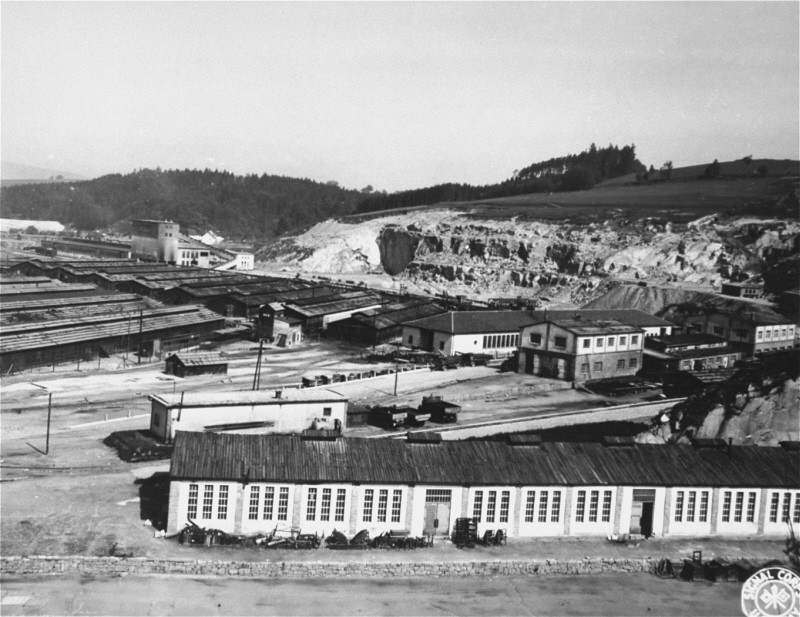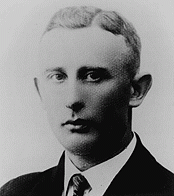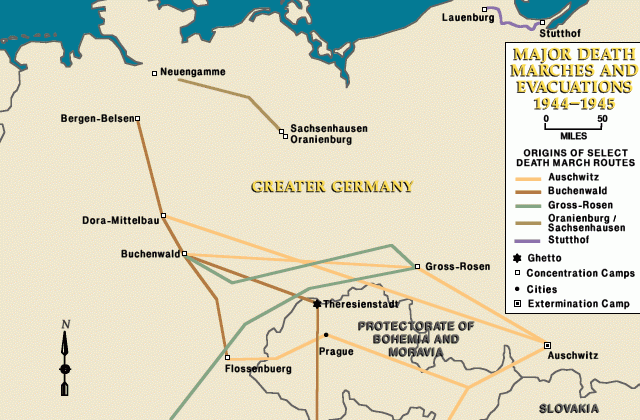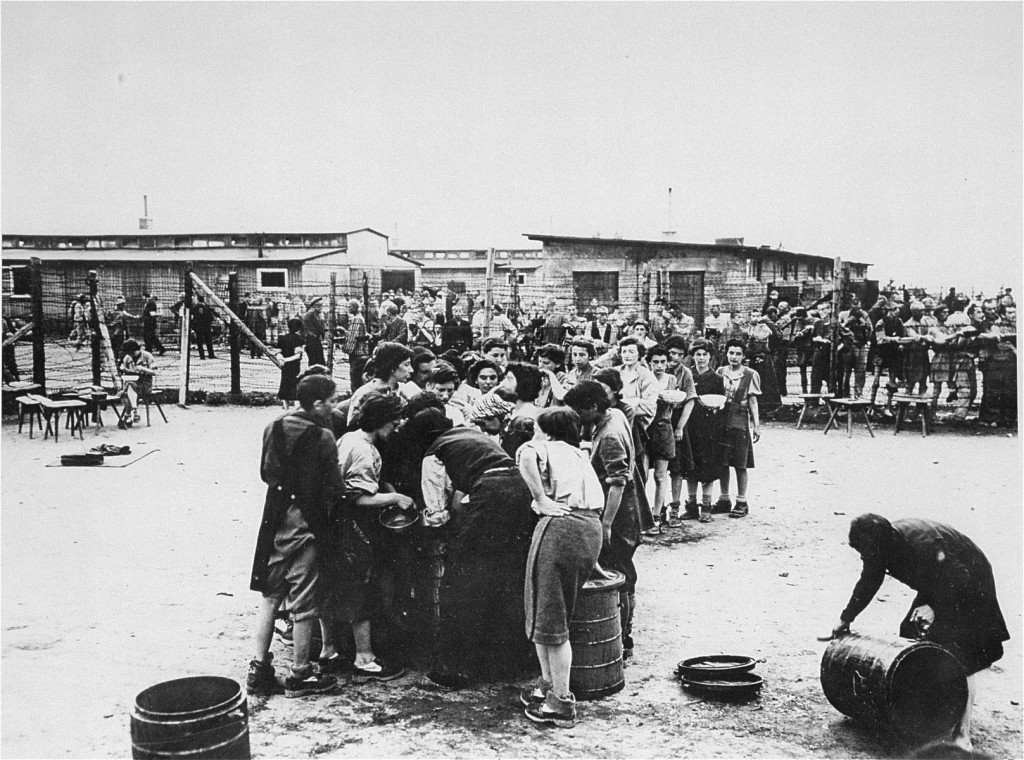
Gusen
Between 1933 and 1945, Nazi Germany and its allies established more than 44,000 camps and other incarceration sites (including ghettos). The perpetrators used these locations for a range of purposes, including forced labor, detention of people deemed to be "enemies of the state," and mass murder. Millions of people suffered and died or were killed. Among these sites was the Gusen camp.
SS authorities established Gusen concentration camp in Austria on May 25, 1940.
Establishment

Located around three miles away from Mauthausen concentration camp, the Gusen site had attracted the SS because of its proximity to the Gusen and Kastenhof stone quarries. SS authorities purchased land at the site on May 25, 1938. Managers of the SS-owned firm Deutsche Erd- und Steinwerke (DESt-German Earth and Stone Works), which used concentration camp prisoner labor to extract and finish construction materials at Mauthausen, established next to the “Wiener Graben” stone quarry in 1938, deployed a forced labor detachment from Mauthausen on a daily basis to the Gusen quarries beginning in 1938. Tiring of marching the prisoner detachment three miles to the Gusen quarries, SS authorities authorized the construction of concentration camp Gusen in late 1939. During the winter of 1939–1940, German, Austrian, and Polish concentration camp prisoners from Mauthausen constructed the camp and prisoner barracks.
Although the site counted as an external labor detachment of Mauthausen during its initial construction, the SS opened Gusen as a separate camp on May 25, 1940, identifying the surviving 212 prisoners from the construction detachment by separate Gusen incarceration numbers and removing their names from Mauthausen records. That same day, a transport of approximately 1,084 Polish prisoners arrived in Gusen.
Over the next several weeks, the SS transferred some 8,000 Polish prisoners to Gusen from other concentration camps, including Dachau and Sachsenhausen. Gusen retained its autonomous status until early 1944. It had its own numbering system, death registry, SS guard battalion, and postal administration.
During the period of its construction, SS Sergeant Anton Streitwieser commanded the Gusen external detachment site. On July 1, 1940, SS Captain Karl Chmielewski became the camp commandant. In late 1942, SS First Lieutenant Fritz Seidler replaced him. Seidler commanded the camp until liberation.
Prisoners
In addition to German, Austrian, and Polish prisoners, the SS incarcerated in Gusen approximately 4,000 Spanish Republicans (Spanish refugees, who had found refuge from the Franco regime in France in 1939 and whom Vichy French authorities turned over to the Germans in 1940) in 1940 and 4,400 Soviet prisoners of war in 1941. Nearly three-quarters of the Spanish Republicans died in the first year at Gusen. By the beginning of 1943, fewer than 500 Soviet prisoners of war were still alive in the camp.
During the later war years, the arrival of more than 3,000 Yugoslavs, more than 9,000 Soviet civilians and more than 2,400 Frenchmen further diversified Gusen's inmate population. Yet the high mortality rate, caused in particular by Commandant Chmielewski's brutal and sadistic management of the camp, kept the prisoner population to between 6,000 and 7,000 up until 1943. Better rations and less arbitrary mistreatment led to a decrease in the death rate from the summer of 1943 until the autumn of 1944, as the SS sought to maintain its labor force.
The need for labor to construct underground tunnels in 1944, induced the SS to increase the prisoner population to more than 24,000 by the end of 1944, including the arrival of 2,750 Hungarian Jews from Auschwitz in June 1944, thousands of Polish Jews from Plaszow, Auschwitz, and Flossenbürg in the late summer and autumn of 1944, 1,000 Polish civilians captured in October 1944 during the Warsaw Home Army uprising, and some 1,500 Italian civilians.
Expansion: Gusen II and Gusen III
In order to accommodate this influx of prisoners, the SS deployed prisoner labor to construct a second prisoner barracks complex in the late winter of 1944. A unit of 270 German air force personnel initially guarded this new complex, which the SS called Gusen II. Gusen II was located on the St. Georgen road. The SS formally established Gusen II as a subcamp on March 9, 1944. The work conditions were so bad that the average rate of survival in Gusen II was approximately six months.
The inability of the Wehrmacht bakery facilities in Linz to provide sufficient bread supply to the rapidly expanding Gusen and Mauthausen prisoner populations induced the SS to establish the subcamp Gusen III in December. It was located in the small town of Lungitz, about 1.5 miles northeast of St. Georgen.
Gusen II came to hold some 10,000 prisoners, many of whom worked in the Steyr-Daimler-Puck AG and Messerschmitt AG munitions plants. Gusen III held about 260 prisoners who made bricks or worked in a Messerschmitt parts depot.
The massive expansion of the Gusen facility induced the SS to place Gusen, Gusen II, and (later) Gusen III directly under the authority of Mauthausen. In 1944, Gusen, Gusen II, and (later) Gusen III were subcamps of Mauthausen.

Killings
Living and working conditions in Gusen, as in Mauthausen, were harsh, leading to the death by murder, mistreatment, starvation, exposure, and disease of more than half of its prisoners. Already in December 1940, the SS contracted with the German firm Topf and Sons from Erfurt to construct a crematorium inside Gusen to handle the disposal of the bodies of the dead. In 1942, the SS staff selected prisoners at Gusen whom they deemed too weak or ill to work and transported them to the so-called euthanasia killing center at Hartheim, near Linz, Austria. There, healthcare professionals murdered over 1,100 Gusen prisoners in gas chambers during 1942 and several hundred in 1944.
During 1942 and 1943, the SS murdered several hundred more prisoners in so-called gas wagons on route between Gusen and Mauthausen. On March 2, 1942, the camp SS murdered at least 62 and as many as 162 Soviet prisoners of war in a makeshift gas chamber erected in block 16 with Zyklon B gas. Even at times in which the SS took measures to reduce the rate of death in the camp in 1943 and 1944, camp personnel conducted systematic killings of individuals and groups of prisoners. In March 1943, the Gusen SS murdered more than 100 Soviet prisoners of war in retaliation for the German surrender at Stalingrad in the Soviet Union the previous month.
Medical Experiments
SS physicians subjected Gusen prisoners to medical experiments. Working in close cooperation with the SS Medical Academy in Graz, the camp SS murdered prisoners to provide cadavers for the medical students. Financed by the chemical conglomerate I.G. Farben, physician and SS Captain Helmuth Vetter tested vaccines for various diseases on Gusen prisoners in the autumn of 1944.
Forced Labor
Initially, the SS deployed prisoners in construction of the camp and in the Gusen and Kastenhof stone quarries. Until 1943, most of the Gusen prisoners worked for DESt in the stone quarries and, increasingly, in finishing the raw stone extracted from the earth. To move the product, they built streets, cleared paths and laid track to the nearby town of St. Georgen, where the DESt factory management had its headquarters. Prisoners also regulated the Gusen River and built a dockyard on the nearby Danube River. Finally, the SS used prisoner labor to tend to a 1,000-animal Angora rabbit farm at Gusen.
Armaments Production
During 1943, the SS deployed Gusen prisoners increasingly in armaments production. In spring 1943, the Steyr-Daimler-Puch Aktengesellschaft relocated a rifle production plant to Gusen, where the DESt constructed eight factory barracks with the expectation that prisoners would produce 10,000 rifles a month. By the end of 1944, some 6,000 prisoners worked in 18 factory halls in Gusen producing rifles, machine pistols and aircraft motors. In August 1943, the aircraft industry giant Messerschmitt relocated its bombed out plant in Regensburg to Gusen, where prisoners produced parts for the Me-109 fighters.
The stress on armaments production brought some benefits to the prisoners in 1943 and 1944. SS authorities increased rations, allowed packages with food and medicine to come in from the outside, and issued worker vouchers for especially productive workers. In late 1942, Himmler ordered the establishment of a bordello in Gusen, in which the SS forced some eight to ten female prisoners from Ravensbrück to provide sexual services for Gusen prisoners seeking to “redeem” their vouchers.
In 1944, with the danger from Allied bombing increasing, SS authorities at Gusen began to move armaments production underground. In November 1943, the camp authorities deployed prisoners at the Detachment “Cellar Construction” (Kellerbau), building underground tunnels in the sandstone hills northwest of Gusen. By the end of 1944, Messerschmitt, Steyr-Daimler-Puch and the SS had moved much of the armaments production plant to various underground locations. The Gusen camp authorities deployed thousands of prisoners to build the tunnels which housed these production sites.
January–May 1945
Like other concentration camps in the interior of the German Reich, Gusen was the destination for thousands of concentration camp prisoners in 1945. In January and February 1945, the SS forcibly evacuated thousands of prisoners to Gusen from Auschwitz, Gross-Rosen, and Sachsenhausen. Most of the new arrivals were Jews.

During April, as Soviet troops invaded eastern Austria, the SS evacuated prisoners from the subcamps of Mauthausen in eastern and southeastern Austria, and southern Moravia to Mauthausen and Gusen. During 1945, some 14,000 prisoners, nearly 25% of all prisoners registered in Gusen, arrived at the camp. In February 1945, the Gusen concentration camp reached its peak capacity of 26,311 prisoners; more than 10,000 prisoners died in Gusen between January and May 1945, including 4,500 prisoners who were shipped back to Mauthausen to die.
During the month of April, Kapos, acting on the orders of the SS, beat several hundred prisoners to death. At the end of that month, in one of the last gassing operations in the Third Reich, the SS murdered 650 ill prisoners with poison gas in a barrack. In early May 1945, some in the SS and in the Upper Austrian Nazi Party leadership toyed with the idea of forcing the surviving prisoners into the underground tunnels dug for the armaments industry and caving the tunnels in with explosives. Neither the SS nor the Nazi Party zealots carried out these plans.
US soldiers assigned to the 26th Infantry Division and the 11th Armored Division liberated some 20,000 prisoners in Gusen on May 5, 1945. In the confusion at liberation, prisoners, enraged by the killings perpetrated by Kapos and barrack elders the previous month, killed a number of prisoners who had served as Kapos, room elders or other types of auxiliary service to the SS staff.
Over the course of its existence, some 35,000 of a total of over 60,000 registered prisoners were killed in Gusen.

After the War
US, West German, and Austrian authorities conducted criminal proceedings against SS personnel serving at Gusen after the war. Gusen played a major role in the US military proceeding against Hans Altfuldisch et al., held at the site of the Dachau concentration camp in 1946. Among the most important proceedings against Gusen personnel was the trial of former Camp Commandant Karl Chmielewski, whom a West German court in Anspach convicted and sentenced to life imprisonment in 1961.
Unlike Mauthausen, the Allies tore down Gusen, though Soviet occupation authorities continued to economically exploit the stone quarries. In 1965, former Italian prisoners were instrumental in erecting a memorial to the victims of Gusen. The memorial was financed by privately raised funds until the Austrian state assumed responsibility for it in 1997. In 2005, Austrian authorities established a visitor and educational adjacent to the memorial.
Footnotes
-
Footnote reference1.
The United States Holocaust Memorial Museum. Encyclopedia of Camps and Ghettos, 1933-1945. Early Camps, Youth Camps, and Concentration Camps and Subcamps under the SS-Business Administration Main Office (WVHA), ed. Geoffrey Megargee. Bloomington: Indiana University Press in association with the United States Holocaust Memorial Museum, 2009. Vol 1, part B, p 921.
Critical Thinking Questions
To what degree was the German population aware of the camps, their purpose, and the conditions within?
Did the outside world have any knowledge about these camps? If so, what actions were taken by other countries and their officials? What choices do other countries have in the face of mistreatment of civilians?

